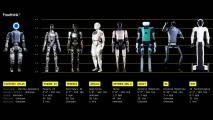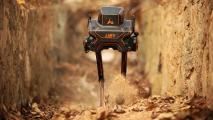At the Dawn Avatar Robot Café, in Tokyo, diners are served by robot waiters, but these bots aren’t AIs — they’re avatars, controlled by employees with disabilities working remotely.
The challenge: Finding a suitable job can be a huge challenge for the hundreds of millions of people living with disabilities globally.
Unemployment rates tend to be disproportionately high — up to 80% in some countries — and even people who can find jobs are often underemployed.
“I am aiming to create a future where everyone can participate in society.”
Kentaro Yoshifuji
Some people with disabilities need jobs to survive, but even those who don’t can benefit from the social interaction and self-esteem boost afforded by employment.
“Being useful, able to help other people, even feeling needed by others is so motivating,” Shota Kuwahara, a man with muscular dystrophy who’s operated one of the robot waiters, said.
The robot café: In 2018, Japanese robotics company Ory Laboratory started opening pop-up cafés where customers are served by robots. The robot staff are controlled by workers with disabilities, such as ALS and spinal muscular atrophy, using eye-tracking software.
“I want to make it so that people are able to meet the people they want to, even while staying in their sickbed, and at the same time, I am aiming to create a future where everyone can participate in society,” Ory’s CEO Kentaro Yoshifuji told Business Insider in March.
Next, food: In June, Ory opened its first permanent robot café in downtown Tokyo. Unlike the temporary pop-ups, this one serves food as well as drinks.
The robot café features several different bots. One is a humanoid torso with arms — it’s stationary and sits on the tables to take customers’ orders. There’s also a 4-foot-tall mobile robot that delivers drinks and smaller plates of food (although human waiters deliver entrées).
The remote workers can see diners through the bots’ cameras and talk with them using speakers and a microphone. Those who have trouble speaking have the option of using a robot voice.
The name and face of each worker is displayed on a badge so that diners can see the person on the other side of the robot. Workers can also express themselves through the bot by changing its eye color and posing its head and arms.
The bigger picture: Ory’s robot café isn’t the only example of avatars in the workforce — other companies are building bots that remote workers can use to clean your home, stock grocery store shelves, and more.
These robots could also open new opportunities for people who aren’t disabled, but can’t leave their homes for other reasons (a lack of transportation or childcare, for example).
We’d love to hear from you! If you have a comment about this article or if you have a tip for a future Freethink story, please email us at [email protected].





